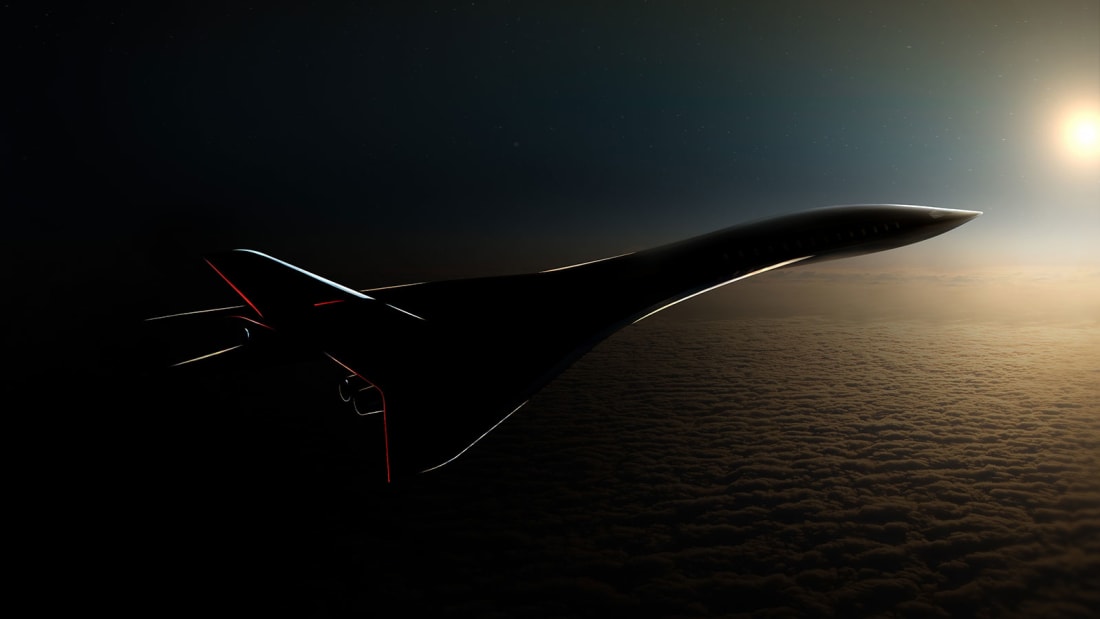Over 50 years after Concorde first brought supersonic travel to the public, the next generation of ultra-high-speed flight looks to be right around the corner.
The two decades following the end of World War II were truly incredible in the world of aerospace, particularly the 1960s. We saw everything from Chuck Yeager breaking the sound barrier in 1947 to the production of the amazing SR-71 Blackbird (still the world record-holding fastest airplane) to the first flight of the game-changing Boeing 747 all the way to manned spaceflight and the first moon landing.

The seminal decade of the ’60s also brought commercial supersonic travel to the world with the truly stunning Concorde airliner, a joint British-French aircraft that first flew in 1969, an inspiring year that also saw the first flight of the 747 jumbo jet and of course man’s first steps on the moon.
Since that era, however, commercial aviation has largely stalled in terms of serious innovation or major breakthroughs. Changes have been incremental, driven primarily by economics rather than imagination. In fact, since Concorde took to the skies half a century ago, about the most exciting thing we’ve seen in the world of commercial aircraft has been the introduction of winglets.
:format(webp)/cdn.vox-cdn.com/uploads/chorus_image/image/47217668/Concorde.0.0.jpg)
The incredible world of supersonic passenger flights ended nearly 20 years ago, as October 24, 2003 marked the end of an era. On that day, the legendary Concorde made its final commercial flight, flying from London’s Heathrow to New York City’s John F. Kennedy airport. Since that time, no commercial supersonic airliners have operated – the regulatory, technological, and financial problems have simply proven too much to overcome. The dream of a three-hour flight between London and New York, a dream that was a reality with Concorde, suddenly seemed firmly consigned to the past.
Now, however, that dream is being revived, and if one US company called Aerion has its way, it’s not London to New York that will be covered in three hours… but Tokyo to Los Angeles! That can only be accomplished by flying seriously fast.
The Aerion AS3 is a Mach 4+ commercial airliner which its manufacturers say will be able to carry 50 passengers over a range of 7,000 nautical miles (that’s 8,055 statute miles, or just under 13,000 km). It’s also planned to do so with a relatively benign carbon footprint.
“Our vision is to build a future where humanity can travel between any two points on our planet within three hours. Supersonic flight is the starting point, but it is just that – the beginning,” said Florida-based Aerion’s chairman, president, and CEO, Tom Vice, in a recently released statement. “We must push the boundaries of what is possible.”

Earlier in 2021, Aerion expanded and strengthened its partnership with NASA’s Langley Research Center, with a specific focus on commercial flight in the Mach 3 to Mach 5 range.
Mach numbers reflect the speed of sound at a given altitude (the absolute speed varies at different altitudes due to changing air density). So to put that in more familiar terms, we’re talking 2,300 to 3,800 miles per hour, or 3,700 to 6,200 kph – that’s up to seven times faster than a regular long-haul passenger airliner, most of which cruise at about Mach 0.8 or so. (Sound waves travel faster through higher-density mediums. At sea level, Mach 1 is about 760 mph, but at 35,000 ft, where most airliners cruise, it’s 660 mph, as the air is less dense.)
In our Asia to America scenario, the flight distance from Tokyo to L.A. is 5,440 miles, or about 8,755 km. Currently, the flight between these two cities takes about 9 hours 30 minutes. A passenger plane cruising at Mach 4 for a good chunk of the overall flight would cut that time to less than three hours.
What would that mean for those of us in Southeast Asia? Unfortunately, until ultra-long-haul supersonic airliners become a thing, we’d still need to make a connection. Flying to Los Angeles, for example, the distance from Singapore is far greater than from Tokyo. At a distance of 8,762 miles (14,101 km), it’s simply beyond the range of many currently operating commercial jets, let alone ones on the drawing board now.
But, if and when that day comes, the nonstop 17-hour-plus flight from the Lion City to L.A., a route now operated solely by Singapore Airlines, could be slashed to less than six hours.
For the relative near-term, though, we’d likely still need to board our trans-Pacific flight from points much further north in Asia to take advantage of the new era of supersonic flight.
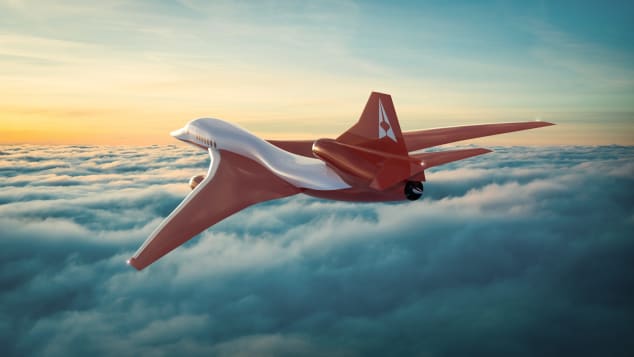
Aerion has already made waves in the industry with its forthcoming AS2 aircraft, a small business-oriented passenger jet which promises to fly from New York to London in 4.5 hours. If all goes to plan, the AS2 will become the first supersonic passenger aircraft to enter commercial service in more than 50 years. The 8- to 12-passenger business jet will travel at Mach 1.4 (more than 1,000 mph and nearly double the speed of most commercial jets), with production expected to begin in 2023. The AS2’s first flight is scheduled for 2024, and Aerion intends to take the plane to market in 2026.
In fact, Aerion is currently building their massive new global headquarters in Florida, right next to Orlando Melbourne International Airport, in order to facilitate ongoing work on its upcoming projects.
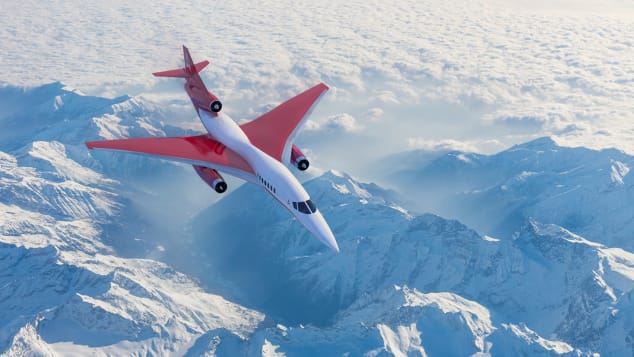
The AS3, which would succeed the AS2, would be larger and much faster. Connecting any two points on the planet within three hours seems wildly optimistic (and frankly unreasonable) at this time, but who knows? In the early 1960s, surely no one imagined a plane that could fly at searing speeds of Mach 3.2 at an altitude of 85,000 ft, but by the mid-1970s, the SR-71 was doing just that.
Aerion’s biggest, buzziest competitor at this stage seems to be Denver, Colorado-based Boom, a curious name indeed for a company focused on supersonic aircraft, whose commercial use was doomed in part by that very thing — the sonic boom.
Nevertheless, in October 2020, Boom made history by rolling out its XB1 demonstrator aircraft, the world’s first independently developed supersonic plane. Dubbed Baby Boom, the 71 ft-long plane is a 1:3 scale prototype of Boom’s upcoming supersonic commercial jet. Called Overture, the passenger jet is expected to have a maximum speed of Mach 2.2, slightly faster than Concorde’s top speed of Mach 2.04, making it capable of flying from London to New York in just three hours and 30 minutes.
Boom has also picked up some impressive cred along the way, including millions in funding from Japan Airlines and a contract from the US Air Force to make a future supersonic Air Force One a distinct possibility.
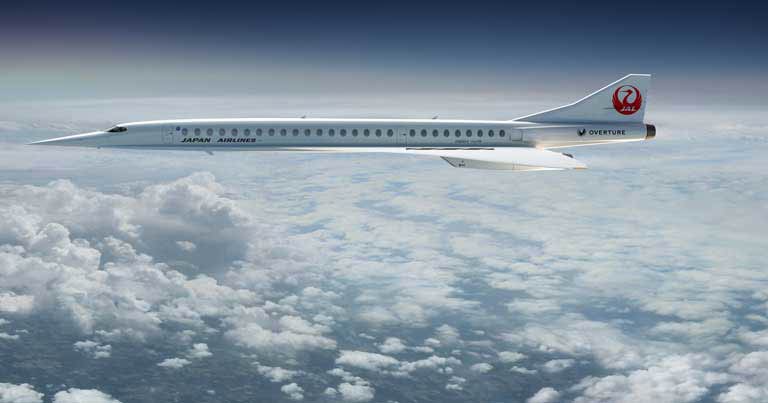
WHY IS GOING SUPERSONIC A BIG THING?
Humans have always been obsessed with speed, but flying faster than the speed of sound was a uniquely challenging goal, one which eluded mankind from the earliest days of powered flight until Chuck Yeager broke the sound barrier in 1947. That’s actually a fairly short span of time for that kind of advancement, considering the pioneering Wright Brothers only got their plane off the ground at all in 1903. But what is the ‘sound barrier’ and why was breaking it a big deal?
When a non-moving object, such as a speaker, produces sound, its sound waves spread out in all directions. If these waves were visible to the naked eye, they would look similar to the waves that occur when you toss a stone into a pond, with little waves spreading out in concentric circles.
When an aircraft goes supersonic, however, it begins to compress the air it’s flying through and actually moves ahead of the sound waves it produces. This phenomenon leads to concentrated sound waves trailing behind the aircraft in a cone-like shape. It’s actually an impressive event, even visually, when an aircraft breaks the speed of sound.
But audibly, it’s an entirely different story. An approaching supersonic aircraft is silent (since it’s literally travelling faster than the sound it’s producing), but when it flies over an observer, they will get hit by a sudden, loud, boom-like sound: the plane’s concentrated sound waves. This is the sonic boom. In some cases, these sonic shock waves can cause damage to buildings or other structures. Supersonic military jets flying over land have even been known to break windows.
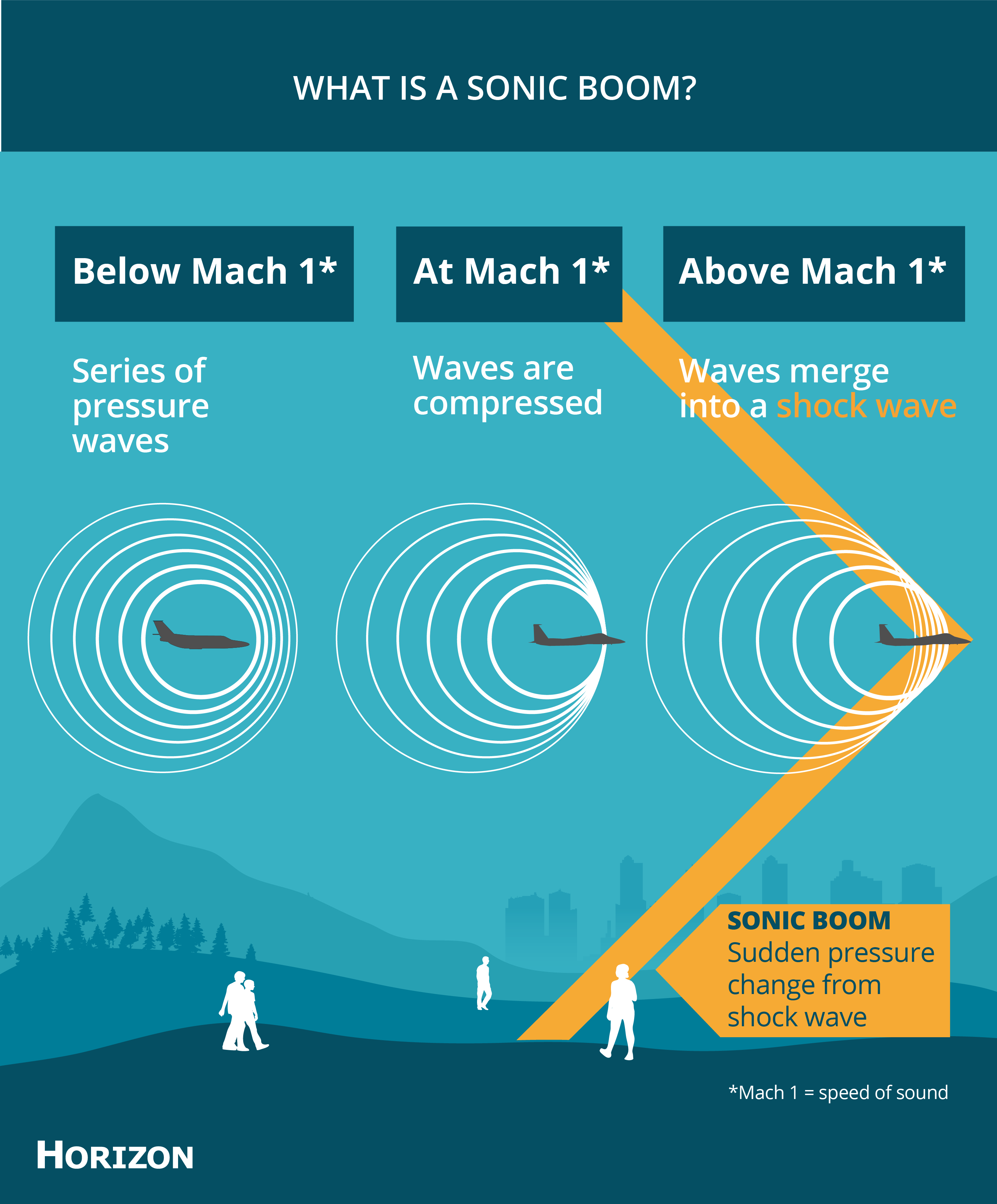
The sonic boom quickly led to Concorde being banned from flying over land, which of course severely limited its flight options to routes including cities like London, Washington D.C., New York, and Paris, among others. Only once the aircraft was over the ocean was it permitted to exceed the speed of sound.
But as our understanding of sonic booms and supersonic flight has grown, so too has our technological know-how. These days, aerospace engineers are working on subtly reshaping crucial parts of the aircraft to yield a ‘low-boom’ supersonic plane. There would still be a sonic boom — that part is unavoidable — but these changes would make the boom only a minor phenomenon, akin to distant fireworks or thunder, not the alarming and occasionally damaging sonic booms of the past.
It indeed seems that a new era of supersonic flight is on the cusp of arrival, and within another handful of years, we could well see some truly incredible speeds realised by commercial flights, finally perhaps even breaking the long-held official top speed of Mach 3.2, a blistering 2,193.2 mph (3,539.6 kph), set by the inimitable SR-71 Blackbird back in 1976.
For now, of course, most of us would be happy to just get those international borders open and take our seats onboard even a traditional, boring subsonic aircraft!
Check out the Aerion AS3 launch video below!
"ExpatGo welcomes and encourages comments, input, and divergent opinions. However, we kindly request that you use suitable language in your comments, and refrain from any sort of personal attack, hate speech, or disparaging rhetoric. Comments not in line with this are subject to removal from the site. "


